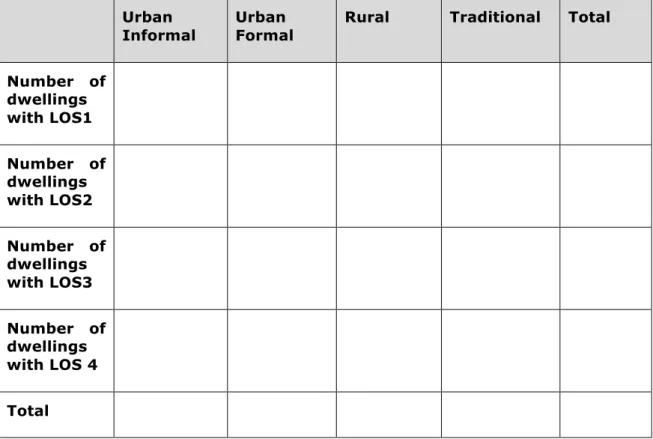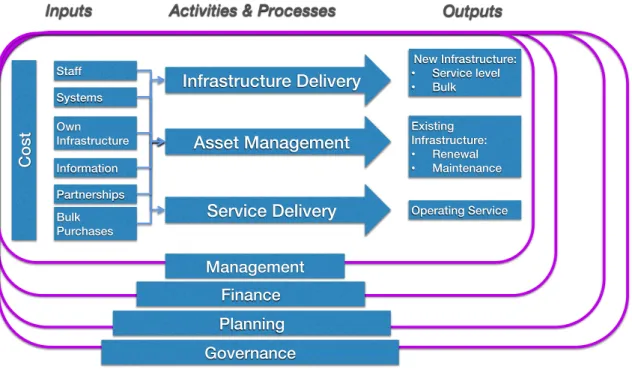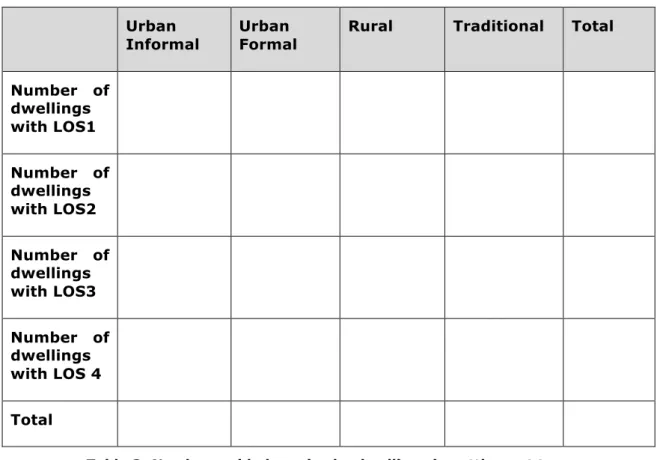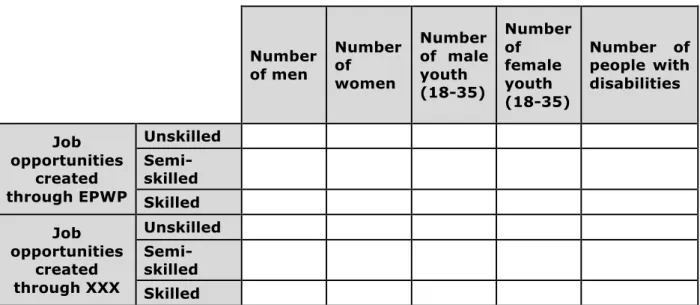It follows the first phase of the work, which assessed the current status of city reporting, primarily with regard to reporting on the built environment. A conceptual framework for reporting on the built environment to be completed or gradually realized over time.
Constitutional mandate
The White Paper on Local Government, 1998
These principles, criteria and conceptual frameworks are now complemented by a proposed systemic framework, institutional arrangements and responsibilities to complete a built environment reporting framework for metropolitan municipalities. The White Paper notes that while intervention in municipalities is primarily a provincial government responsibility, it may be necessary for the national government to intervene with the provincial government, or when the provincial government fails to intervene.
Local Government Legislation
Municipal Systems Act, 2000 3
This annual performance report must form part of the municipality's annual report in accordance with Chapter 12 of the Act on Municipal Financial Management. 3. The Provincial Treasury then has 22 working days after the end of the month to submit a consolidated statement to the National Treasury for all municipalities and municipal units in their jurisdiction.
Government-Wide Monitoring and Evaluation 5
The purpose of the South African Statistical Quality Assessment Framework (SASQAF) is to provide a framework for evaluating statistical products for self-evaluation, reviews by Statistics South Africa, evaluation by data users and evaluation by international agencies. 8. Regarding the protocol for determining statistics, the Statistician General will only do so if the statistics meet the SASQAF criteria for quality.
Integrated Development Plan
Also, the National Treasury, together with the provincial treasuries, is required to monitor the implementation of the FMPPI by all institutions within their sphere; provide training on the use of performance information; provide input for the indicator selection process; and to use information generated by the institution to report on economy, efficiency, effectiveness and equity in the use of resources. According to the FMPPI, national departments responsible for concurrent functions should be directly involved in the development of systems and structures to collect performance information for these functions in all spheres.
SDBIP
This is in line with IDP reviews and updates and that performance tracking should allow "an early warning indicator of low performance". 8 Item 5 Detailed capital expenditure plan broken down by department for three years Only item 3 is the focus as it is the only element of the SDBIP that relates to non-financial performance information.
Built Environment Performance Plan
For example, compared to financial information available within 10 days of month-end, there can be a lag of 2-3 months and it can be challenging to determine “relevant and objective performance information for service delivery and to measure the quality of service delivery. From the perspective of the MFMA, the indicators and targets set in the SDBIP are subject to quarterly non-financial performance reporting.
Auditability
As part of the transition to linking the BEPP with the ICDG, metros are expected to develop a set of built environment indicators by March 2014 and include them in Section D of the BEPP. CSP BEPP guidance states that “when included in SDBIPS, metro built environment performance reporting becomes part of metro's overall reporting in terms of the existing Treasury regulations together with section 71 reports (due 10 days after the end of each month) and quarterly reporting against SDBIPS " (NT, 2013: 13). The BEPP has introduced a strategic spatial planning element that is supposed to sit between the MSDF and the IDP, but does not impose significant new reporting burdens as reflected in the set of specific indicators integrated into the SDBIP.
There are significant implications arising from this conceptual framework, principles and criteria that require review of the structure and purpose of SDBIPs and IDPs in particular. It has been agreed thus far that this reform process will ensure that we work with the AG's office to ensure that audit methods are appropriate for the type and purpose of information used for performance reporting.
Rationalisation of LG Data Collection Processes
DPME Study into State and Use of M&E
Reporting Reforms Project 12
The CSP stated in the project charter for this project that there are two main reasons for this project. Ensure that information collected is of strategic value and that reporting and monitoring enable devolution, asymmetry and appropriate oversight. Maximize the utilization of information collected by all stakeholders, including national, provincial and local governments as well as citizens and civil society.
Thus, the framework aims to provide a multi-stakeholder consensus on how reporting should work, conceptually, based on a set of agreed principles that lie at the heart of the framework. It focuses on 'what' we should measure and report and is intended to be a framework that is completed over time.
The results frame
Ensure that all roles reflect a meaningful allocation of responsibilities consistent with the legislative mandate and set-up of the institution. Resources put into a project, program, or policy (funding, personnel, equipment, curriculum materials, etc.). The medium-term results for specific beneficiaries resulting from the achievement of specific outputs.
From the above, there are clear synergies between existing policy and generally accepted international definitions of the key concepts related to indicators. The international definitions do provide more detail, which, when read together with the FMPPI, is instructive in terms of the task at hand.
The Results Framework at City Scale
16 The diagram above frames a chain of results for city government that describes municipal inputs that are transformed into services through municipal activities and processes.
Unpacking the enablers
Unpacking outcomes for the built environment
Unpacking Impact
Background to the principles
Defining an indicator 18
In order to limit the administrative burden, the emphasis should be on fewer indicators that are clearly linked to spatial transformation, rather than many indicators that measure performance across a wide range of specific sectors of service delivery, housing or infrastructure. The emphasis should be on outcome indicators, rather than inputs and outputs to give municipalities some flexibility and discretion to adapt their specific strategies to local conditions and local priorities, and avoid micro-management from above;. Each indicator should not require unnecessary original efforts to collect the relevant data, and it should be feasible to repeat the exercise over time;.
Indicators must be timely (ie record performance within a reasonable timeframe) and be able to show a trend over time; The adoption of indicators should be gradual in order to build on existing frameworks and systems and allow time for the introduction of measurement technologies (Treasury, 2013).
Complementary 20
While it is difficult to hold individuals such as managers accountable for results, there are still some results that are sufficiently attributable to make it inappropriate for managers to be let off the hook. It is important to conceptually distinguish between city performance and human and organizational capabilities (inputs) and institutional and social capabilities (context). It is well known that not all municipalities are the same and that there is a diversity of contextual conditions and powers and functions that justify the distinction, e.g.
The assumption of extreme differentiation means that it is not possible to compare the performance of any two municipalities as they are different. It is important to be able to assess our cities in comparison to other cities, especially in relation to emerging general expectations such as the Sustainable Development Goals to replace the Millennium Development Goals.
Background to the criteria
Duration - refers to the delay between the reference point to which the data belongs and the date on which it becomes available, as well as the frequency and. Accessibility- refers to the ease with which it can be received by the agency, including suitability of form and medium, including cost considerations. Interpretability - refers to the ease with which users can understand statistical information through the provision of metadata.
Methodological soundness - refers to the application of international, national or peer-agreement standards, guidelines and practices for statistical output. Integrity - refers to the values and related practices that maintain trust in the agency producing statistics and ultimately the statistical product (StatsSA, 2010: 4).
Proposed criteria for good indicators
26 The above provides a good starting point for a description of an individual indicator, but of course this should be modified as necessary to ensure that the exercise of describing the indicator is sufficient in itself to meet the conditions under which an individual indicator must be assessed. Appropriate - the indicator should be useful for guiding service improvements and is formulated in a way that reduces the risk of unintended consequences or perverse incentives associated with its achievement, and complements the existing set of indicators related to the overarching goal. Indicators should be comparable between all municipalities or at least within a selected category of municipalities.
Indicators that are a comparison with a municipality's own objective or previous performance are not statistically comparable between municipalities. There is considerable overlap in two areas in particular, which has prompted the drawing up of a reporting protocol.
Service delivery to dwellings
A reporting protocol is a standardized set of indicators that are reported on and available to a number of different stakeholders. Standardized reporting protocols can significantly reduce the amount of reporting required and create a standard, agreed-upon set of definitions that cities report on. The areas in which they are particularly suitable are services and job creation.
There may be a case for creating a reporting protocol for housing types and access, the Department of Human Settlements will need to pursue this further. 28 The actual level of service (LOS) and dwelling type on which the reporting will be based will have to be determined by the appropriate department and StatsSA.

Job creation
The formula used to calculate the indicator (must be specified according to the data . elements below). If this indicator is aligned with other sets of indicators, indicate its origin, especially if it is part of an international one. Determines whether the reported performance is an average over a period of time, at the end of a period of time, or cumulative, and additionally notes how.
If the data element is collected by another entity, details of the responsible person in the other entity. If the data element is collected by another entity, the data on the responsible person are at.
Institutional Responsibilities
To ensure that reporting reforms continue and improve, coordination of local government reporting needs to be institutionalised. Its role will be to maintain the local government's performance information system, by enforcing the principles and criteria in this document and progressively realizing the conceptual framework. Motivations for new reporting requested from the local government must be approved by this council.
All members should be considered experts in local authority reporting and indicators and be prepared to attend quarterly meetings. It is complemented by proposals for institutional arrangements and responsibilities to provide an intergovernmental framework for cities to report on the built environment.




